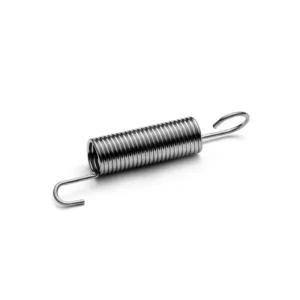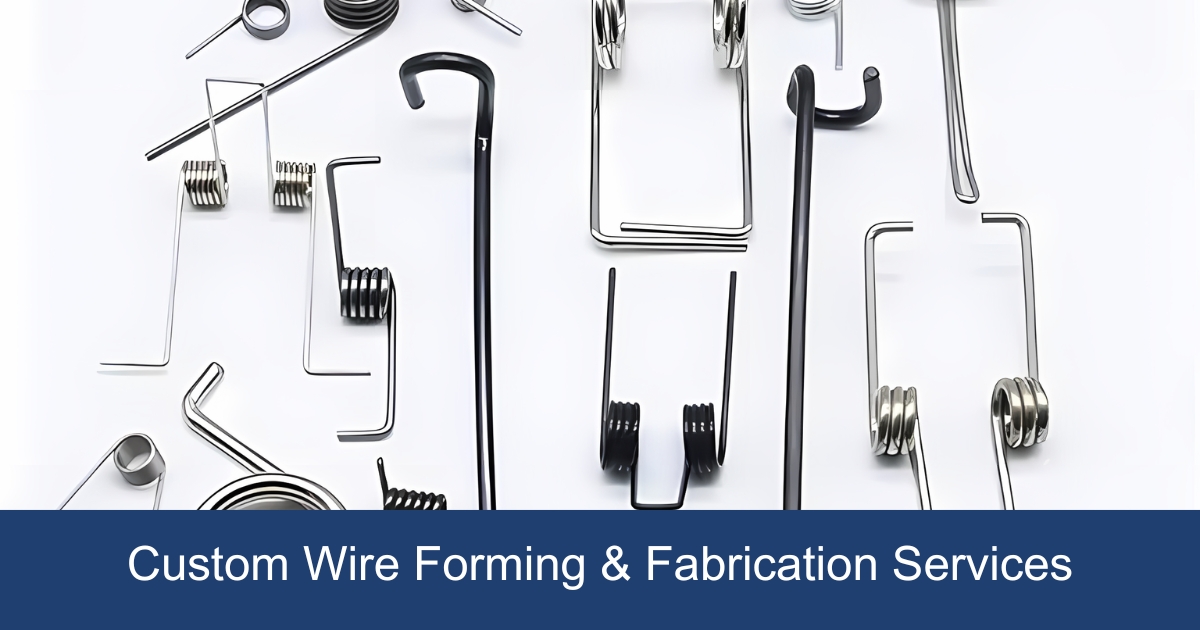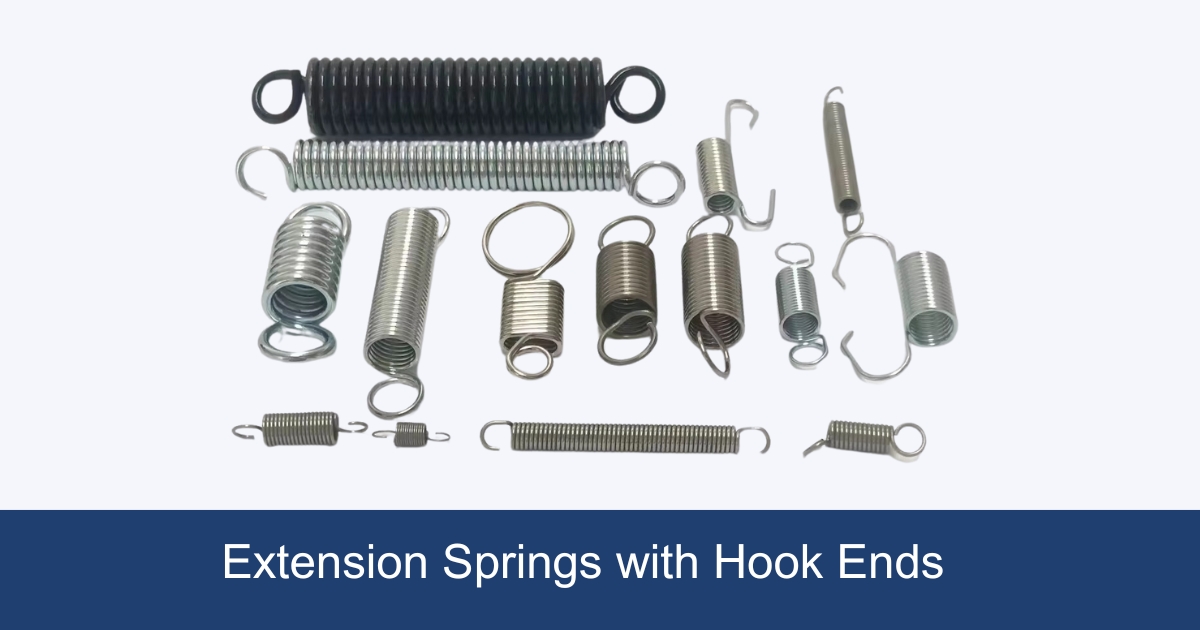Embarking on the custom prototype springs process is a journey from concept to tangible reality. This guide offers you a concise yet profound look into creating prototype springs, promising insights and methodologies that exceed expectations. Discover the essential steps to ensure your project’s success, rooted in precision and custom innovation. Welcome to the path of transforming ideas into functional excellence.
Why is Prototype Springs important?
Prototype spring emerges as a cornerstone in the development and manufacturing process, embodying the bridge between conceptual design and the final product. Its importance is multifaceted, ensuring that both manufacturers and clients align on expectations, identify potential issues early on, and refine the product to perfection. Here’s a breakdown of why spring prototyping is indispensable:
- Early Detection of Design Issues: One of the most critical aspects of spring prototyping is its ability to uncover design flaws or failings early in the development process. Identifying these issues at the prototype stage can prevent costly changes and delays during production, saving both time and resources.
- Resource and Expense Savings: By spotting potential problems in the prototype spring phase, manufacturers can avoid the significant costs associated with revising designs during or after production. This early detection not only streamlines the prototyping springs manufacturing process but also reduces expenses for the client, making rapid prototyping springs a cost-effective step in product development.
- Optimization of Design and Materials: Prototyping springs allows designers to test and refine their initial designs, explore different materials, and ultimately develop the ideal version of the product. This iterative process ensures that the final spring design is optimized for performance, functionality, and manufacturability.
Spring Design Considerations for Great Results
When delving deeper into the intricacies of spring prototyping, it’s crucial to consider every element that can impact the final product’s performance and reliability. Beyond wire diameter, coil size, active coils, stress resistance, and end types, several additional factors play a pivotal role in achieving excellence in spring design.
Below is a succinct table summarizing the key considerations for spring design to ensure superior results, focusing on the essentials for clarity:
| Design Factor | Impact and Importance | Optimization Strategy |
|---|---|---|
| Wire Diameter | Affects strength and flexibility. | Balance based on application needs for ideal load capacity and flexibility. |
| Coil Size | Influences dimensions and performance characteristics. | Adjust for proper fit and desired performance, like rate and energy storage. |
| Active Coils Number | Determines energy absorption and release. | Fine-tune for efficient load handling and flexibility. |
| Stress Resistance | Key to durability and longevity. | Optimize with material selection and design for high resilience. |
| End Types | Affects connection and load distribution. | Select for seamless integration and functionality. |
| Material Selection | Impacts strength, corrosion resistance, temperature tolerance. | Choose materials for optimal performance and longevity. |
| Surface Finish/Coating | Influences friction, wear resistance, environmental resistance. | Tailor to application demands for enhanced durability and functionality. |
| Spring Geometry | Essential for fit and interaction with other components. | Ensure correct free length, solid height, and pitch for intended environment. |
| Load and Deflection Rates | Critical for function without failure. | Calculate accurately to design for intended forces and responses. |
| Environmental Considerations | Operating environment impacts performance. | Consider factors like humidity, temperature, and chemicals for durability. |
| Manufacturing Process and Tolerances | Affects precision, quality, and cost. | Understand tolerances and limitations of techniques for balance between performance and budget. |
Electronic Spring Prototyping
In the realm of spring manufacturing, prototyping stands as a critical phase, especially so for springs destined for electronic applications. We understand the precision and meticulous specifications required for electronic springs, given their pivotal role in ensuring the functionality and reliability of electronic devices. These springs often need to fit within extremely tight spaces and operate flawlessly under specific conditions.
Our approach to electronic spring prototyping is comprehensive, focusing on rigorous testing and validation to meet exact specifications. The rapid prototyping springs process includes an array of tests designed to assess the springs’ performance under various conditions. Key among these tests are compression and tension evaluations, alongside thorough stress analyses, ensuring each spring can withstand the demands of its electronic application without faltering.
Best Practices for Successful Rapid Prototyping Springs
To ensure successful rapid prototyping springs, consider the following best practices:
- Collaborate with experts:Engage with experts in spring design and prototyping. Their knowledge and experience can provide valuable insights and help optimize the prototyping process.
- Utilize advanced design software:Utilize advanced design software that offers simulation capabilities. This allows for virtual testing and optimization of designs before physical prototyping.
- Prototype early and often:Don’t wait until the final stages of product development to start prototyping. Prototype early and iterate frequently to catch design flaws and make necessary improvements.
- Document and analyze test results:Keep detailed records of test results and analyze them thoroughly. This will help in identifying trends, common issues, and areas for improvement.
- Embrace rapid prototyping technologies:Leverage rapid prototyping technologies such as 3D printing to accelerate the prototyping process and enable faster iterations.
- Seek feedback from stakeholders:Involve stakeholders such as customers, manufacturers, and end-users in the prototyping process. Their feedback can provide valuable insights and lead to better design decisions.
By following these best practices, engineers can optimize the rapid prototyping process for springs and achieve successful outcomes.
Quality control for prototype springs
In the development of prototype springs, testing is a critical phase that encompasses various specific checks to ensure each prototype meets the desired standards of performance, durability, and applicability. Each type of test targets a particular aspect of the spring’s functionality or integrity, providing invaluable data for refining the prototype. Here, we delve into the specific areas of focus during the testing phase.
| Test Type | Objective | Procedure | Importance |
|---|---|---|---|
| Load Testing | Determine load-bearing capacity. | Apply increasing loads; measure deformation and recovery. | Ensures capacity alignment with requirements. |
| Fatigue Testing | Assess endurance under repeated stress. | Subject to cyclic loading at set frequencies and amplitudes. | Predicts lifespan and failure points. |
| Environmental Testing | Ensure performance under specific conditions. | Expose to temperature, humidity, and corrosives. | Confirms suitability for intended environment. |
| Corrosion Resistance | Test resilience against corrosives. | Use salt spray or immersion tests. | Critical for marine or chemical exposure. |
| Dimensional Accuracy | Verify dimensions match specifications. | Measure with precision tools (micrometers, calipers, CMM). | Ensures fit and functionality in assembly. |
| Material Property | Confirm expected material properties. | Perform tensile, hardness tests, and grain structure analysis. | Assures material withstands operational stress. |
| Spring Rate Testing | Measure force required for extension. | Apply force, measure displacement, calculate spring rate. | Key for applications requiring specific responsiveness to load. |
By conducting these specific tests, spring engineers can ensure that prototype springs are not only designed to meet theoretical standards but are also capable of performing reliably under real-world conditions. This thorough approach to testing paves the way for successful application and longevity of the springs in their intended use cases.
Troubleshooting Common Issues in Designing and Prototyping Springs
Below is a table summarizing common issues encountered in designing and prototyping springs, alongside solutions and preventative measures:
| Common Issue | Consequences | Solutions and Preventative Measures |
|---|---|---|
| Incorrect Load Calculations | Springs too weak or too stiff, failing under use or lacking flexibility. | Implement comprehensive load and stress testing to verify performance criteria. |
| Material Fatigue | Premature wear or failure under repeated stress. | Opt for durable, resilient materials suitable for intended use and environmental exposure. |
| Inaccurate Dimensions | Fitment issues or functional inadequacies. | Use advanced design software and precise manufacturing technologies (e.g., CNC machining) for dimensional accuracy. |
| Surface Defects and Corrosion | Reduced lifespan and performance. | Apply appropriate coatings or treatments for enhanced wear and corrosion resistance, based on the spring’s operational environment. |
Expert Tips for Ensuring Spring Prototype Integrity and Performance
- Leverage Simulation Tools: Employ finite element analysis (FEA) and other simulation tools during the design phase to predict how the spring will behave under various loads and conditions, allowing for adjustments before physical spring prototyping.
- Iterative Design Process: Adopt an iterative approach to design and testing. Use feedback from each prototype testing phase to refine the spring design, enhancing its functionality and reliability.
- Engage with Experienced Manufacturers: Collaborate with custom spring manufacturers who have extensive experience in spring prototyping. Their expertise can provide invaluable insights into material properties, manufacturing techniques, and potential design optimizations.
- Consider the End-use Environment: Spring design with its ultimate operational environment in mind. Factors such as temperature fluctuations, potential chemical exposures, and mechanical stresses should influence material choices and design specifications.
- Quality Control Standards: Implement strict quality control standards at every stage of the spring prototyping process. This includes not only the manufacturing phase but also the selection of spring materials and the final testing of the spring.
Prototyping Expertise At Zigoal Springs
At Zigoal,a prefessional custom spring manufacturer, prototyping is a cornerstone of our approach to delivering bespoke spring solutions tailored to our customers’ unique needs. Our mastery in spring prototyping is demonstrated through the provision of premium quality samples that precisely mirror the envisioned spring design.
Our team, proficient and committed, recognizes the significance of materializing and evaluating a spring design prior to mass production to ensure it adheres to the exacting specifications and performance criteria expected. Leveraging cutting-edge spring prototyping methodologies and the latest technology, we craft accurate, dependable samples.
For further insights into our rapid prototyping springs capabilities or to initiate your custom spring project, we invite you to reach out to us. With Zigoal Spring, embark on a journey from concept to reality, where your vision is our blueprint for innovation and excellence.
Spring Prototyping FAQs
Q: What are the typical lead times for prototype springs?
The typical lead times for prototype springs can vary widely depending on the complexity of the design, the materials used, and the current workload of the manufacturing facility. Generally, you can expect a lead time ranging from 3-7 days at Zigoal Spring manufacturer.
Q: How are costs estimated for prototype spring projects?
Costs for spring prototyping are estimated based on several factors, including the type of material used, the complexity of the spring design, the quantity produced, and the lead time required. Additional services like expedited manufacturing, special finishes, or testing can also affect the overall cost. For simpler prototypes, Zigoal Spring does not charge for the prototype itself, but shipping costs will be the responsibility of the customer. Typically, costs can range from 50 to 250 US dollars, depending on the specifics of the project. To get a detailed estimate, Please contact Ziogal spring experts to assist you.
Q: How do you protect the confidentiality of shared proprietary designs?
Zigoal Spring ensure the confidentiality of your proprietary designs by signing Non-Disclosure Agreements, employing secure data systems, and rigorously training our staff in data protection.
Q: What information do I need to provide to get an accurate prototype spring estimate?
To ensure an accurate estimate for your prototype spring project, provide detailed specifications such as spring type (compression, extension, torsion, etc.), dimensions (outer diameter, wire diameter, length, etc.), material preferences, quantity needed, and any special requirements like coatings or finishes. The more comprehensive your information, the more precise your estimate will be.
Q: How does the material selection affect my prototype spring?
The choice of material significantly impacts the performance, durability, and cost of your spring prototyping. Factors like tensile strength, corrosion resistance, operating temperature range, and environmental exposure should guide your material selection to meet the specific requirements of your application. a custom spring manufacturer can help you choose the most appropriate material based on these needs.
Q: Can Zigoal help with the design of my prototype springs?
Yes, Zigoal, a custom spring manufacturer China, offers design support services to help refine your prototype spring designs. Whether you’re starting from a basic concept or need to optimize an existing design for better performance or cost-effectiveness, Zigoal’s experts can provide valuable insights and suggestions.
Q: What testing and quality assurance processes do prototype springs undergo?
Prototype springs are subject to various testing and quality assurance processes to ensure they meet the specified requirements. These can include load testing, cycle testing, dimensional inspections, and material analysis. Zigoal implements stringent quality control measures throughout the prototyping process to deliver springs that align with your expectations.
Q: Is it possible to adjust my prototype design after initial testing?
Yes, one of the advantages of prototyping is the ability to refine and adjust your design based on initial testing results. Zigoal supports iterative design improvements, working closely with you to make necessary modifications to enhance the spring’s performance, durability, or manufacturability.




